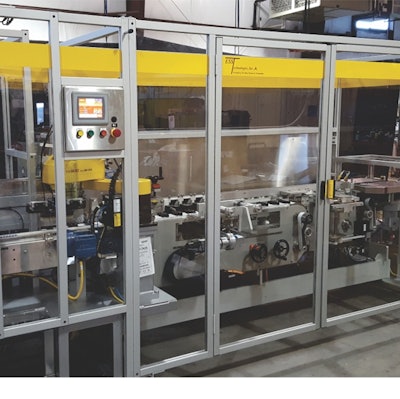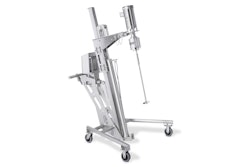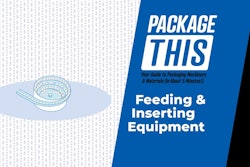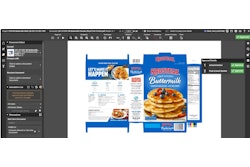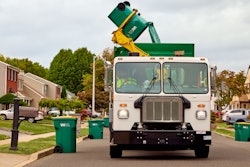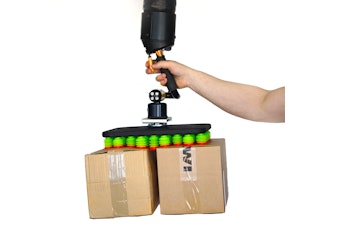Author - Elisabeth Cuneo, Contributing Editor, PMMI ProSource
When handling cartoning operations or purchasing new equipment, consumer packaged goods (CPG) brands usually understand the basics of cartoning equipment and how it should function. But sometimes, there are things beyond the basics that can lead to a slowdown or line jam. When that’s the case, it’s important to consider these often-overlooked aspects related to cartoning equipment and operations that can be easily remedied. So, to avoid major problems, ask yourself these six questions related to your cartoning equipment and operations
1. How trained are my cartoning equipment operators?
When cartoning equipment begins to fail or you face efficiency problems, often the number one cause is that the initial set up was not done correctly. Operator training is essential for both set up and then routine maintenance or service (or merely everyday operation) to keep the cartoning equipment running efficiently. There are several training methods available today to make operator training engaging and interesting. Whether you opt for in-house training or through a third party, be sure to invest the time and money into getting your team properly trained to handle the equipment. Don’t forget to ask your cartoning equipment supplier about the equipment training programs they provide, too.
2. Am I using the optimal carton type for the product?
Materials, machine, and personnel all impact cartoning performance. Whether forming cartons from flat blanks or picking and opening folded cartons, carton quality is a significant factor affecting the consistency of the cartoning equipment in your operation. And as speeds increase and carton designs get more complex, carton quality becomes even more critical. When looking at specific carton material, ask yourself if you’re using the right material. For example, consider if a litho-laminated microflute corrugated carton (of E or F-flute) can replace a paperboard carton that then needs to be loaded into an outer shipping case for shipping protection. Often microflute cartons (depending on their size) can be individually palletized directly, without the need for an additional shipping case. Plus, the litho-laminated layer on the outside of the microflute corrugated board provides the same high level of graphics that a paperboard carton does for display on the grocery shelf.
3. How is the product being loaded in the cartoning equipment?
Here is an often-overlooked consideration that doesn't require any capital investment that supports material tolerance and machine performance: what care taken in how personnel load cartons into machine magazines? Loading that avoids gaps between cartons and places cartons square on the magazine tends to improve performance in the critical area of picking and opening folded cartons. In one scenario, a CPG improved its cartoning equipment efficiencies from the low to the high 90's by focusing on this one element. It may be worthwhile to consider the consistency provided by features such as magazine pick window tooling and air frame assist for opening certain folded cartons to improve efficiencies and operating tolerance.
4. What type of equipment do I have upstream?
Knowing what equipment is upstream is critical to overall equipment efficiency. Consider how product is controlled upstream of the cartoning process and transferred from upstream machine to machine. To aid in this process, consider purchasing an inexpensive automatic product loading system that can do the job. Also, look at any manual adjustments (like a crank tool to adjust positions or loosen something) and consider programming automatic adjustments to save on time and labor issues. Eliminating manual adjustments whenever possible during changeover will result in less downtime.
5. What is your predictive maintenance plan?
Since predictive maintenance monitors the equipment in real time, it’s able to predict when maintenance is required before the machine breaks down. When used correctly, predictive maintenance plans save you costly repairs and cartoning equipment downtime and could save your company thousands of dollars over time. In addition, through the use of predictive maintenance plans and robust operator manuals stored on the HMI's that offer checklists and video guidance, quick and repeatable changeovers are possible. When deciding on a purchase, inquire about machine options that may not add a significant amount to the purchase/lease price yet may address operational or maintenance performance issues.
6. Am I using the correct closure?
Carton styles, product types and weights, and other factors may dictate the needs around closure strength and types. Choosing a supplier that can provide cartoning equipment with a lock or glue-style closure gives you the flexibility to choose depending upon the product, package style, and plant needs. For example, lock-closure cartons eliminate the need for glue consumables, thereby reducing costs and maintenance. However, glue closure provides greater tamper-evident visibility and shelf appeal compared to lock closure. When both lock or tab style and glue closures are possible -- yet automation and performance levels are increasing -- glue closures tend to be the leading choice. Cartons using glue closures are often more rigid and maintain squareness that supports better efficiencies of downstream automation, such as case packing.
As you incorporate new cartoning equipment or make adjustment to your own line, consider these often-overlooked aspects of cartoning to ensure you’re maximizing throughput. The takeaway? Maintain better quality control of all components being processed in the production line for optimal efficiency on your cartoning line.
Browse companies that provide Cartoning Equipment right here on PMMI ProSource.
Featured image courtesy of ESS Technologies.
